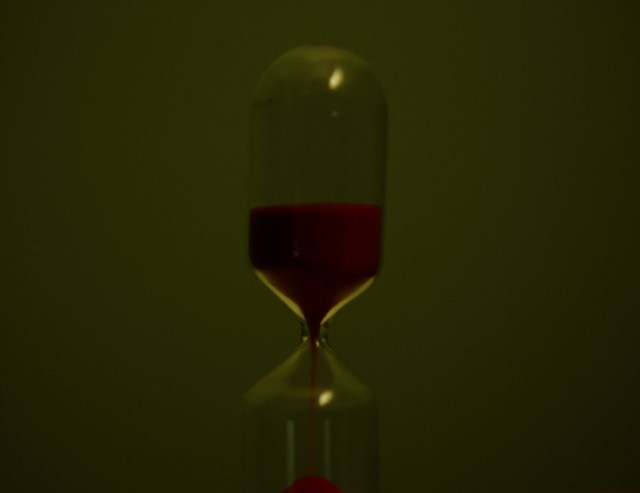Jess O’Kane’s directorial debut Girl at Party is a simple and stylized story about killing, yet highly nuanced too; classically a film noir of the femme fatale variety, O’Kane transmutes the tropes of the ‘dangerous women’ subgenre to horror. Girl at Party is loaded with subtleties and visual cues that beg to be read between the lines. When death is a woman, and her weapon is sex, there is much to unpack.
Working with archetypal character types, O’Kane establishes much of the mood and our understanding of the film visually, rather than through exposition or dialogue. From the very start of Girl at Party, I’m reading the codes: we see a woman applying lip gloss in close-up as she creeps on a man through a window. She’s on a mission and not an innocent one. I hardly believe her when she introduces herself as “Lily”. It’s unspoken, but clear, through the delivery with a grin, that she’s gone by many names. Lily comes across as sweet but impersonal, the space she occupies lit in red. She’s shot, along with her bait (Cian), from strange angles and there’s an off-putting rhythm in the editing. The form of the film tells us what we’re experiencing—Girl at Party shows > tells. As director O’Kane explains:
“Short films can sometimes feel a bit tell and not show because of the time constraints, and as a writer primarily, I was really conscious that I could easily do something very ‘talky’. So I tried to challenge myself to do something largely visual, where there’s a sense of atmosphere throughout and the dialogue is minimal . . . I really wanted to feel like we had told a complete story in under 10 minutes, that nonetheless could linger and leave its edges a little undefined.”

The most visually appealing part of Girl at Party is the “kill” sequence. As Lily and Cian’s relationship take the form of the sand timer that counts down to the end. It’s at once beautiful and haunting.
Yet, is Lily simply an uncomplicated predator? Fast forward from the intro and we find Lily and Cian in the bathroom. There’s now a huge contrast between how the two are shot and the non-diegetic sound that plays. What we see feels cold, and the conversation only feels sympathetic on the part of Cian. However, the music that plays feels otherwise – that these are two people who could be falling in love. There are also the non-verbal cues of Lily ignoring her phone the first time it rings to listen to Cian speaking. All of these contradictions build up, combining to make sense of the big question at the end.
We’re not going to try to answer those big questions either, as doing so could dilute the impact of Girl at Party, but speaking to O’Kane about her motivation to make the short she reveals just enough to further feed those fires of thought:
“As a screenwriter, I love writing characters who can turn on a dime, and I’m fascinated by the way women – and young girls – in particular – develop both under the male gaze and through their own self-perception. The space between the two is a bit mysterious, and it becomes more fraught the more conventionally attractive you are, so the idea of a beautiful character who is a bit of a ‘lure’ simply by existing came to mind. I knew she would be not what she seemed, and I knew she would be sad.”
